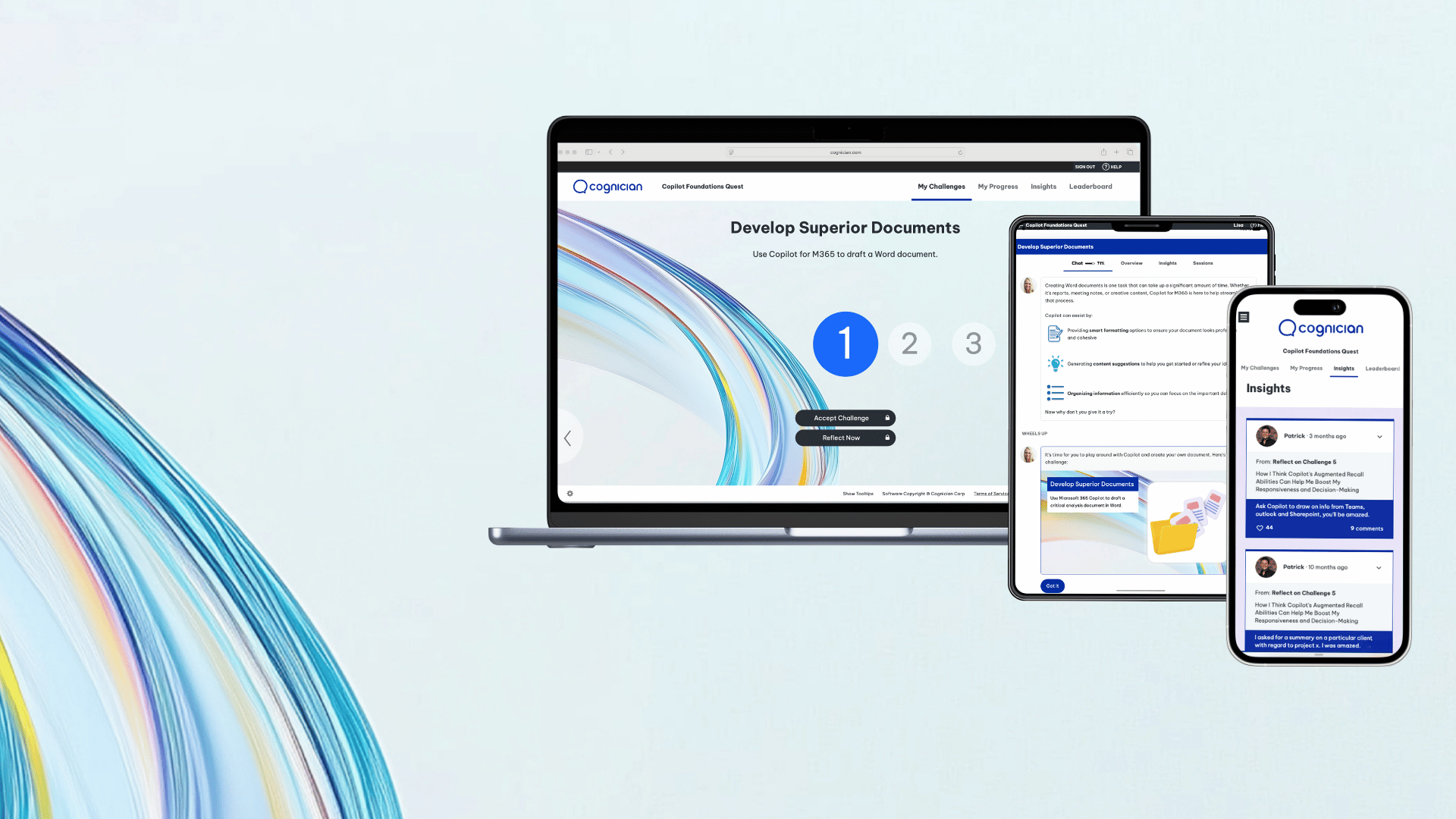How do you drive behavior change at work and make it stick? This framework explains the impact of digital learning experiences.
Why is behavior change so hard to achieve at work? Why do we continue to behave in ways that are unproductive, inefficient and ineffective, and keep on doing so year in and year out? Surely all it takes to change is focus, determination and willpower? Easy, right?
Not quite! Ask any trainer, mentor or coach what their biggest challenge is and they'll probably tell you that it's not only getting employees to change their behavior, it's making it stick. All too often employees attend a training seminar or webinar and they leave feeling invigorated, inspired and determined to adopt what they learned to their work and life. But a few weeks later they return to their old ways, with their newfound goals abandoned. Everyone is aware of the problem of backsliding to old behaviors. So what does it mean for business?
According to The Association for Talent Development, in 2019, the average spend by businesses on employee training was $1,299 per year. Imagine what that means to a business' bottom line if most of that spend bears little fruit. Imagine the drain on resources, time and energy if the problems they are trying to solve with training, do little to change the status quo.
So how do you drive behavior change at work and make it stick? Let's take a look at Cognician's framework for creating durable, impactful digital experiences to activate behavior change.
Contribution: In order to learn and change, people need to make a contribution to their learning.
Great digital experiences are generative. They give people opportunities to contribute their own ideas, actions and reflections – and to have their contributions recognized by peers. By making an investment in their own learning journey, the experience becomes meaningful and impactful.
Ownership: People need to have the time and affordances to take ownership of ideas and new ways of working.
Effective training actively involves people in the learning process, enabling them to imagine, act, reflect and thus take ownership of new ways of thinking and behaving. With ownership, behavior change is not only possible, it is durable.
Guidance: People desire knowledge and know how, and a path to acquire both.
Impactful digital experiences provide guidance in the form of coaching questions (rather than simply providing information alone). Questions are a powerful tool in guiding learners to reflect deeply on behaviors and patterns of thought that are deeply embedded and habitual. Only by shedding light on issues that are hindering the learners progress, can real and sustainable behavior change take place.
Neuro-centric: Neurons need to be activated in multiple ways for people to learn effectively.
Great learning experiences activate the learner’s neural circuitry by engaging the mind with many perspectives, enabling them to respond with their own ideas. In this way, learners are able to bring their full mental capacity to thinking deeply about issues which help drive real, positive and long lasting change.
Inspiration: People want to be inspired to be their best selves.
Meaningful change experiences provide inspirational moments that matter, delivering powerful ideas and deeply felt emotions. Only with inspiration can learners be truly engaged and invested in what they are learning and why.
Connection: People crave connection with others.
Learning experiences that are impactful drive real connections between people, and deliver a sense of belonging (rather than a sense of alienation). Feeling connected not only adds more meaning to the learning process, it drives purpose, fosters trust and encourages team-building.
Impact: People want to feel and know that their learning is having an impact.
Powerful digital experiences are created to achieve meaningful impact. They give learners feedback on how they’re doing, and show administrators metrics that matter. Knowing that their learning is making an impact adds meaning and purpose to behavior change.
Action: People want to apply in action what they learn in theory.
Significant learning experiences create opportunities to actively apply new ideas soon after exposure to those ideas, and thus to learn from reflecting on experiences. This doubles down on the learning experience and encourages experimenting and modifying habits and behaviors that work for the learner.
Nudging: People often need to be nudged to behave the way they want to behave.
Great change experiences include nudges to help people engage, act, reflect, and behave in new and productive ways. This kind of gentle intervention reinforces and cements new behaviors which prevent backsliding and reverting to old habits.



.png)

